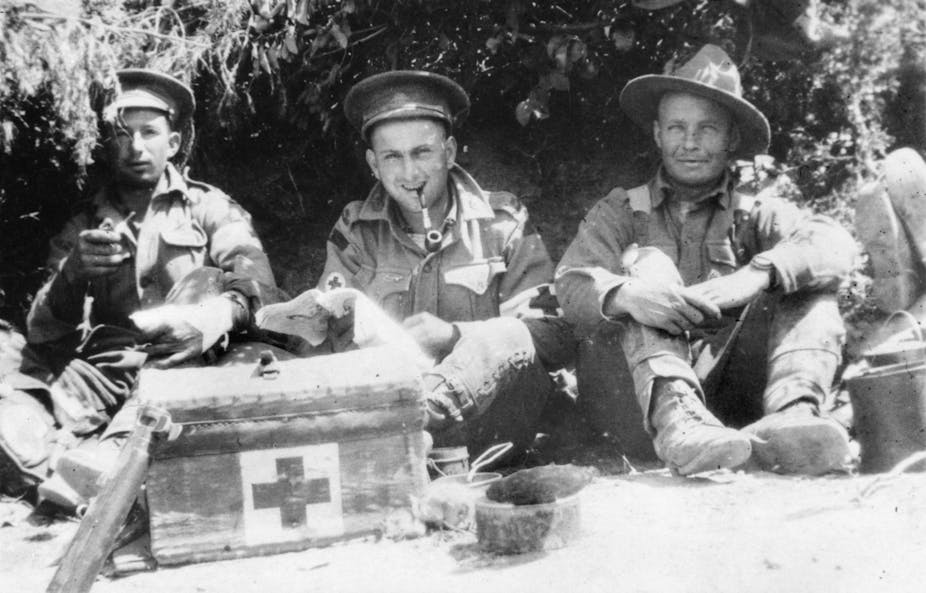In the early years of the television age one name stood out as a communicator of history to the masses: the celebrated British historian, A.J.P. Taylor. In the 1950s and 60s Taylor used the force of his personality and compelling storytelling to give a version of his Oxford University lectures to television audiences, including a six-part series, First World War, on ITV in 1961.
Taylor appeared first on radio then television, on panels and alone, but the most indelible memory he left was of a don who talked direct to camera, unadorned by props and without notes.
In the 1970s, Jeremy Isaacs and Thames Television produced the 26-part series The World at War, then considered to be the gold standard of traditional documentary. The series was anchored around the principles of an unseen narrator vested in a male authority voice (in this case, Laurence Olivier), archival or “found” footage and in-depth interviews with talking heads.
These days much has changed about the way history is brought to a television audience in response to both audience demand and evolving technologies. Although there have been some standout examples in the past 20 years of the “telly don” presenting history in the form of a personal essay, particularly in Britain, other forms now predominate.
In its most popular form on Australian commercial television, the historical documentary is now based on dramatic reconstruction interspersed with sound-bites from a diversity of celebrity talking heads. We can see how this works in practice on Channel 7’s sweeping overview of Australian history, The Story of Us.
A recent episode on the first world war featured quick grabs from a cocktail of high profile voices – journalists, politicians, modern-day veterans – in addition to a few historians whose expertise we might expect the producers to draw on.
Multiple talking heads could be interpreted as a worthy gesture to plurality. Or is this approach merely ratings-driven? The capacity of such populist television to deepen the historical understanding of an audience is doubtful when those voices are a blend of expert and infotainment, and when consistently subordinated to an emphasis on dramatic action.
And although the story arc included a focus on AE2 – a lesser-known narrative about the Gallipoli campaign – its nationalist frame is unable to place the campaign in a more meaningful international context.
Gallipoli on the small screen
As we draw ever closer to April 25 2015, popular representations of the first world war through television and other media will grow in intensity, threatening to drown out the parallel but separate narratives of professional historians on the conflict.
One clear indication of the limitations of popular understanding of the most visible campaign of the war, Gallipoli, is an observation in a 2011 document prepared by the National Commission on the Commemoration of the Anzac Centenary. The Commission noted:
there is a perception that there is as much information as anyone could want about Gallipoli already available – but despite this actual knowledge is poor.
One major contributing factor to the limited state of knowledge is an exaggerated nationalist preoccupation with the campaign that airbrushes out some of the critical wider factors.
When audiences are offered an opportunity to renegotiate their exclusive national alignments by presenting universal features of the campaign, understandings may be altered. One way to achieve this is to refocus discussion by considering recent scholarship that presents Gallipoli through an explicitly international lens.
Two documentaries produced for the 90th anniversary of the campaign in 2005 help a mass audience to recover memory of the campaign in its broadest sense and to explore its multiple meanings: Melbourne-based Wain Fimeri’s television documentary Revealing Gallipoli, and Turkish filmmaker Tolga Örnek’s Gallipoli: The Frontline Experience.
Of the two companion documentaries, Revealing Gallipoli was perhaps the more innovative. December Films made 13 versions for various broadcast partners in three languages (English, Welsh and Turkish), with the Welsh and New Zealanders using their own presenters. Historian Peter Stanley, former principal historian at the Australian War Memorial, has written in depth about his experience as a historical consultant on the film.
In a carefully choreographed performance, the three historian presenters cross paths with each other on set. The camera moves between them, reflecting the importance of perspective and its ever-shifting nature in this complex campaign. The constantly changing perspective has the effect of subverting traditional expectations of whose voice we will hear, and demonstrates how perspective is contingent.
While Revealing Gallipoli and Gallipoli: The Frontline Experience are distinctive in their approach and aesthetic, the commonalities are perhaps more striking. The narrative structure of each documentary is anchored around mini-biographies of selected men from several participant nations supported by archival images and quotations from their letters and diaries. Both are devoid of jingoism and sentimentalism and their anti-war tone is unmistakeable.
The films emphasise the universal experience of war, supported by the unvarnished words of the common man revealed through letters and diaries. They make a forceful case for rethinking the campaign and what it meant to all of the major combatants.
They are among the best examples of the new hybrid form of documentary that can at once engage generalist audiences and function as an educational tool to promote a better appreciation of wartime heritage in and between the combatant nations. Like Taylor in his era they illustrate the effectiveness of innovation and compelling talking heads for communicating historical ideas.
This is a version of an article entitled Breaking out of the nationalist/ic paradigm: international screen texts on the 1915 Gallipoli campaign published in Continuum: Journal of Media & Cultural Studies in August 2014. The author is co-convenor of The First World War: Local, Global and Imperial Perspectives which will be held in Newcastle later this month. Details here.
See also:
1916: how the events of the first world war shifted global history
Gargoyles and silence: ‘our story’ at the Australian War Memorial
The forgotten Australian women doctors of the Great War

